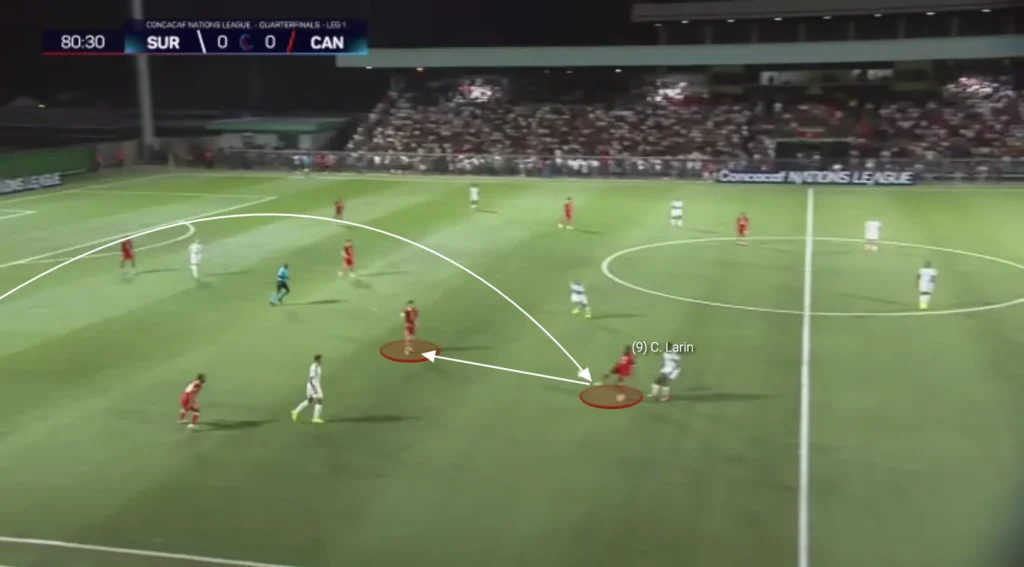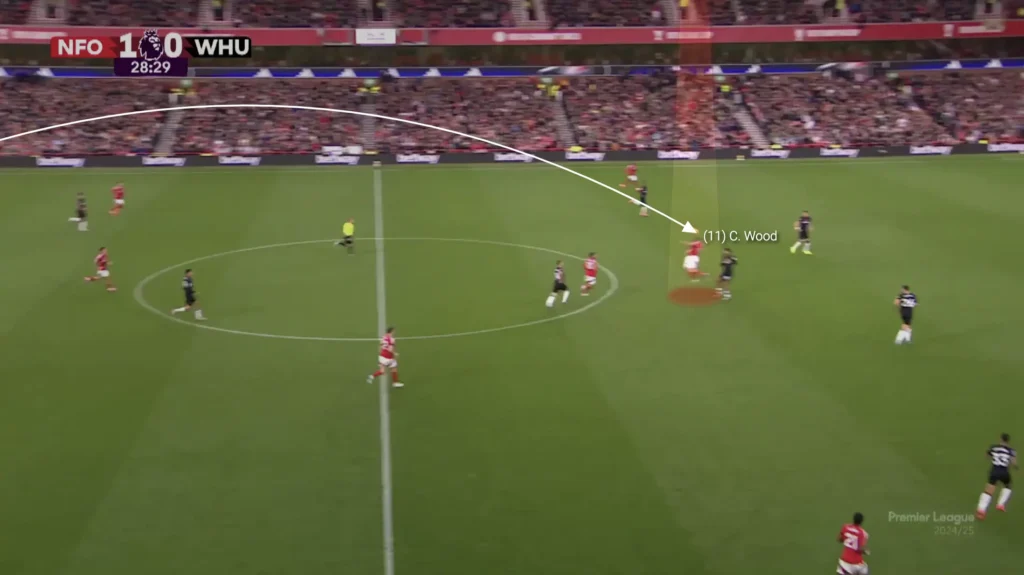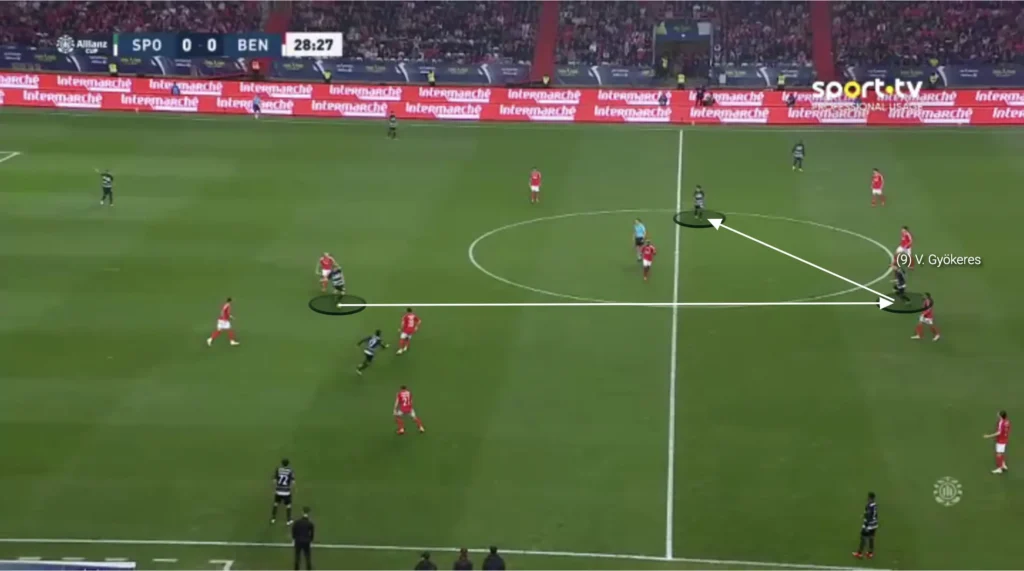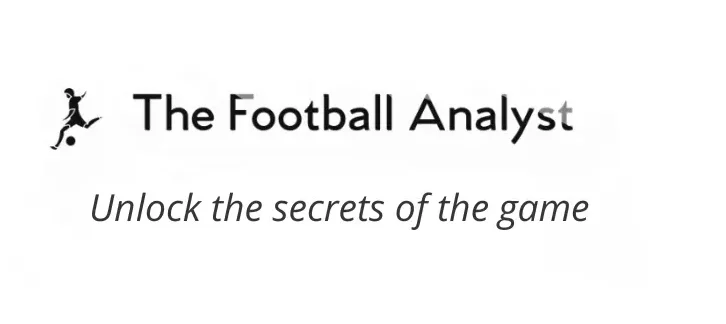In football, the term “target man” refers to a specific type of centre-forward whose primary role is to act as a focal point in attack. Typically, a target man is known for their physical attributes—height, strength, and aerial ability—which enable them to receive long passes, hold up play, and involve teammates in attacking movements.
This role has been a fundamental part of football tactics for decades, particularly in systems that emphasize direct play. However, as the game has evolved, so too has the role of the target man. While traditional target men were mainly relied upon for aerial duels and hold-up play, modern variations combine physicality with technical ability, mobility, and tactical intelligence.
In this article, we will explore the characteristics of a target man, their role in different tactical systems, how teams use them effectively, and how the position has evolved in modern football.
Role of a Target Man in Football Tactics
The target man can be utilized in various tactical approaches, depending on the team’s style of play. Their presence often dictates how a team structures its attacking and defensive strategies. Here are some key roles they fulfill:
1. Hold-Up Play
One of the most important functions of a target man is holding up the ball. This allows teammates to make attacking runs while the target man retains possession under defensive pressure.

- When facing high-pressing teams, holding up the ball helps relieve pressure on the defense.
- In counterattacking systems, a target man can receive a long pass, control it, and play in a teammate making a forward run.
- Holding up play also allows the team to transition from defense to attack more effectively, ensuring players have time to push forward and create overloads.
- A strong target man with good ball control can also draw fouls in dangerous areas, giving the team opportunities from set-pieces.
2. Aerial Threat
Target men are often used to contest aerial duels from long balls, goal kicks, or crosses.

- They serve as an outlet for defenders looking to bypass midfield pressure.
- A target man who can win headers consistently allows for flick-ons and second-ball opportunities.
- Their presence in the box during set-pieces makes them a constant goal-scoring threat.
- Strong aerial ability also helps in defensive set-pieces, where they can clear crosses and corners.
- In tight games, a well-timed header from a target man can be a game-changing moment, whether from open play or a dead-ball situation.
3. Linking Play
In many tactical systems, the target man acts as a bridge between midfield and attack. By dropping deeper to receive the ball, they create space for attacking midfielders or wingers to exploit.

- In a 1-4-4-2 formation, they can partner with a quick striker who runs in behind defenses.
- In a 1-4-2-3-1 system, they provide a central reference point for wingers and attacking midfielders.
- The ability to play quick lay-offs or switch the play helps teams retain possession and progress up the pitch efficiently.
- Intelligent movement from a target man can pull defenders out of position, creating gaps for teammates to exploit.
Tactical Formations That Utilize a Target Man
Different formations and styles of play can benefit from having a target man. Here are some common examples:
1-4-4-2 (Classic Strike Partnership)
In this setup, the target man typically plays alongside a quicker, more mobile striker.
- The target man holds up the ball and flicks it on to their strike partner.
- Wingers provide crosses, using the target man’s aerial ability to create chances.
- Example: Didier Drogba at Chelsea playing alongside Nicolas Anelka or Frank Lampard making late runs.
1-4-2-3-1 (Lone Striker System)
In a system where the target man operates alone upfront, they must be capable of holding up the ball and bringing attacking midfielders into play.
- Requires support from wingers and a central attacking midfielder.
- Example: Olivier Giroud at Arsenal and Chelsea, playing as a lone striker and linking up with midfielders.
1-3-5-2 (Wing-Back System)
In this system, wing-backs deliver crosses into the box, making a strong target man essential.
- The target man partners with a second striker who plays off their knockdowns and layoffs.
- Example: Fernando Llorente at Juventus and Tottenham, thriving in aerial duels.
Key Attributes of a Target Man
A target man requires specific attributes to succeed in their role. These can be broken down into three main categories:
1. Physical Attributes
- Height and Strength: Target men are usually tall and physically strong, allowing them to win aerial duels against defenders.
- Balance and Body Positioning: Holding off defenders while shielding the ball is a crucial skill.
- Jumping Ability: Even when not the tallest player, a good target man has excellent timing and leap to compete in the air.
2. Technical Skills
- First Touch: A good first touch is essential for controlling long passes and distributing the ball effectively.
- Ball Control and Retention: Holding onto possession under pressure allows teammates to move into attacking positions.
- Heading Ability: Both in open play and set-piece situations, a target man must be able to direct headers effectively.
- Passing and Lay-Offs: The ability to play quick one-touch passes or flick-ons to teammates is a key aspect of linking play.
3. Tactical Awareness
- Positioning: Knowing when and where to position themselves to receive the ball is crucial.
- Decision-Making: The target man must decide whether to shoot, pass, or hold up the ball based on the game situation.
- Link-Up Play: Understanding teammates’ movements to facilitate attacks through quick combinations.
Evolution of the Target Man in Modern Football
While traditional target men were primarily physical players, the modern game demands more versatility. Today’s top target men blend physicality with mobility, technical skill, and tactical intelligence.
1. Hybrid Forwards
- Players like Erling Haaland combine strength and aerial prowess with speed and technical ability.
- Romelu Lukaku is another example of a modern target man who can hold up play but also run in behind defenses.
2. Increased Mobility and Pressing
- Traditional target men were not expected to press aggressively, but modern football requires forwards to contribute defensively.
- Teams using high-pressing tactics need strikers who can chase defenders and initiate counterpressing moments.
3. More Technical Skill
- Some target men, like Harry Kane, have evolved into deep-lying forwards who can drop into midfield and act as playmakers.
- This variation allows teams to be more unpredictable in their attacking play.
Challenges of Using a Target Man
While having a target man can be beneficial, there are some drawbacks:
- Predictability: Teams that rely too heavily on a target man can become one-dimensional and easier to defend against. Opponents may set up defensive strategies specifically to counter aerial threats and second-ball situations, reducing the effectiveness of long-ball tactics. This can limit attacking variety and make a team more predictable.
- Requires Quality Service: Without proper delivery from wide areas, a target man can be ineffective. Their role depends on teammates providing accurate crosses, long balls, and through passes. If a team lacks strong wide players or creative midfielders, the target man may struggle to influence the game.
- Pace Limitations: Most traditional target men lack pace, making it difficult to stretch defenses. High defensive lines can restrict their ability to find space, forcing teams to rely on secondary attacking threats. To counter this, many teams partner a target man with a quicker striker who can exploit gaps in the opposition’s defense.
- Adaptability to Different Play Styles: A target man may not seamlessly fit into every tactical system. Teams focused on quick transitions, intricate passing, and fluid movement may find a static striker less effective. Managers must determine whether a target man aligns with their overall tactical philosophy.
- Defensive Contributions: In modern football, pressing from the front is often a key tactical requirement. Traditional target men may not have the agility or endurance to sustain high pressing, making them less suited to teams that rely on intense defensive pressure.
Conclusion
The target man remains a valuable tactical asset in football. While their traditional role involved aerial duels and hold-up play, the modern game demands more versatility from these players. Whether used in direct play or as a link-up forward, a well-utilized target man can be a game-changing presence on the pitch.
As football continues to evolve, the target man will likely adapt further, blending physical dominance with technical skill and tactical intelligence, making them indispensable in various tactical systems.
